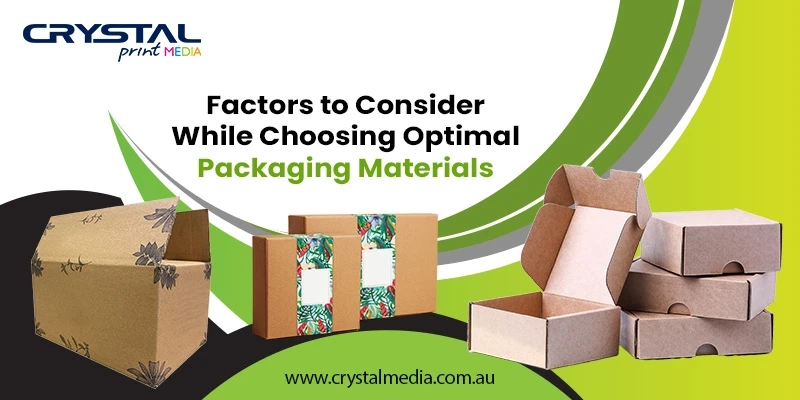Print packaging materials play a vital role in protecting, presenting, and enhancing the visual appeal of printed materials such as brochures, posters, labels, and much more. Choosing the right print packaging material can have a significant impact on the overall customer experience and the success of your marketing campaign.
Here are some guidelines for optimal print packaging material selection:
Consider the product and its intended use
The first step in choosing the right print packaging material is to consider the product and its intended use. What is the product made of? What is its shape and size? How will it be shipped and stored? What kind of protection does it need?
For example, if you are packaging a fragile product, such as a glass vase, you will need to choose a material that is strong and durable enough to protect it from damage. If you are packaging a product that is heavy or bulky, you will need to choose a material that can support the weight and withstand the rigors of shipping and handling.
Consider the target audience
Another important factor to consider is your target audience. What are their expectations? What kind of packaging will they find appealing?
For example, if you are targeting a high-end market, you may want to choose a premium packaging material, such as embossed paper or foil. If you are targeting a younger market, you may want to choose a more colorful and playful packaging material.
Consider the budget
Of course, budget is also a consideration. Print packaging materials can range in price from inexpensive to very expensive. It is important to find a material that fits your budget and meets your needs.
Consider the environmental impact
In today's environmentally conscious world, it is more important than ever to choose print packaging materials that are sustainable. There are a number of eco-friendly packaging materials available, such as recycled paper, compostable packaging, and water-based inks.
Choose a reputable supplier
Once you have considered all of the factors above, you can start to shop for print packaging materials. Be sure to choose a reputable supplier that offers high-quality products and competitive prices.
Here are some additional tips for selecting the right print packaging material:
Choose a material that is compatible with your printing process. Not all materials are created equal, and some materials may not be compatible with certain printing processes.Make sure that the material is easy to work with. If you are planning to package your products yourself, you will want to choose a material that is easy to cut, fold, and assemble.Consider the visual appeal of the material. The packaging material should be visually appealing and complement the overall design of your product.Get samples. Before you order a large quantity of print packaging material, be sure to get samples from different suppliers. This will allow you to compare the different materials and choose the best one for your needs.Common print packaging materials
There are a variety of print packaging materials available, each with its own unique advantages and disadvantages. Here are some of the most common print packaging materials:
Paper: Paper is one of the most versatile and affordable print packaging materials. It is available in a wide range of weights, textures, and finishes. Paper is also recyclable and biodegradable.Cardboard: Cardboard is another popular print packaging material. It is stronger and more durable than paper, making it a good choice for packaging heavier or more fragile products. Cardboard is also recyclable.Corrugated: Corrugated is a type of cardboard that is made up of three layers of paper. The middle layer is fluted, which gives corrugated its strength and cushioning properties. Corrugated is a good choice for packaging heavy or fragile products that need to be shipped long distances.Plastic: Plastic is a lightweight and durable print packaging material. It is also water-resistant and grease-proof. Plastic is a good choice for packaging food and beverage products.Metal: Metal is a strong and durable print packaging material. It is also airtight and watertight. Metal is a good choice for packaging food and beverage products, as well as products that need to be protected from the elements.Conclusion
Choosing the right print packaging material is an important decision that can have a significant impact on the overall success of your marketing campaign. By considering the product, the target audience, the budget, the environmental impact, and the visual appeal of the material, you can select a packaging material that will protect your product, enhance its visual appeal, and appeal to your target audience.


